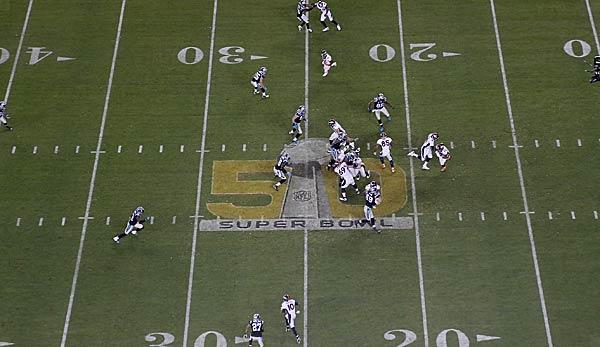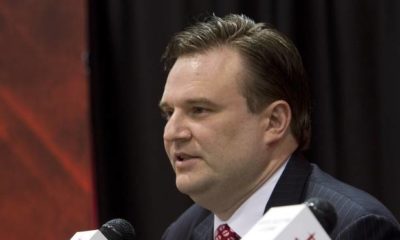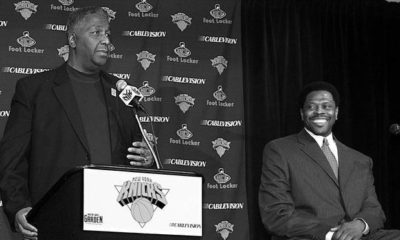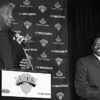US-Sport
NFL: Jeff Reinebold explains Playbook creation, play-calling, game planning
How is a football playbook actually created? What factors play a role? How do you prepare for an opponent week after week and which aspects are decisive for the announcement of the moves in the heat of battle? Jeff Reinebold looks back on over 30 years of offensive and defensive coaching experience at college (amongst others Montana, New Mexico, Louisiana Tech, Hawaii), Canada and Europe (Rhein Fire). He has worked under several great coaches. In conversation with SPOX, the 60-year-old explains the tactical basics of each football team.
Football is a complex game, and the deeper you go, the more you discover – the questions of strategy and tactics are not always easy to answer. A crucial aspect of this is the playbook, just like the play-calling, i. e. the announcement of the moves, and the game planning, i. e. the preparation for a certain opponent. In a two-part mini-series, SPOX looks at precisely these central aspects. Part 2 with the focus on play calling will be available tomorrow, Thursday.
SPOX: Mr. Reinebold, I just start with the core question: How do you build your first playbook? How can you imagine this process, where do you even start?
Jeff Reinebold: Your playbook has to meet a number of criteria: It must be easy for players to understand and read. All this information is of no use to the player if he cannot use it. It must have a river, you have to be able to put things together and build them on top of each other. But first you have to create a glossary, a catalogue with all the expressions you want to use. It is important that you do this in order to get your message across constantly. Some teams call a curl route a hook route, others just the other way around. Basically this is the same move, but the bottom line is that each member of the coaching staff and everyone in the team must speak the same language.
SPOX: So language is the first step? So what happens next?
Reinebold: Exactly. You first decide which language you want to use. This is written down in the playbook.
SPOX: What happens next?
Reinebold: Most of them then have a so-called “philosophy area”, i. e. how they see their playbook from the core. For example, offensively how they want to move down the field. The bottom line is always – especially in the offense – the question of how you want to block. The game starts at the Line of Scrimmage, so there is a separate section in the playbook that contains the Run Plays. What should your Run Game look like? From which formations is it played? Which motions and the like are built into these moves? It says all that. So you have an area for the run game and one for the protection, so that the offensive linemen know how to deal with all the different defensive formations you see in the game.
SPOX: And only then does it start to pass?
Reinebold: Yes, the quarterback has to know what his hot reads are on the one hand, on the other hand there is the area for the passing game. In principle, it contains the route progressions and the route tree, i. e. all itineraries and how the quarterback has to read them. It is also decided whether to work with a number or name system for the moves, which formations and personnel groupings to use and what they are called. Afterwards, you will go even deeper into the material, you will start to divide the playbook into things like “Goal-Line moves”,”Red-Zone moves”,”4-Minute-Drives”,”2-Minute-Drives with guide”,”2-Minute-Drive with backlog” and all these situations. These areas must all be treated carefully so that you can work with them in the game.
SPOX: Good keyword: You assemble this big playbook – but how much of it you actually use in the game?
Reinebold: That is quite different. Let’s take Ben McAdoo of the Giants as an example: He has this huge playbook on the sidelines, the part is gigantic! On the other hand, I used to work for June Jones, an outstanding coach – and he never had anything on the sidelines, he said it all out of his head.
SPOX: And where is the trend going?
Reinebold: A tendency that I recognize: Coaches have more placements on their so-called “Ready List”, the list that they carry along on the sidelines. In the meantime they carry more Plays around with them than they could say in a game at all. But they want to be prepared for every conceivable situation, every scenario and every defence conversion. The plays on this list are subdivided accordingly:”First and Ten”,”First and Ten Red Zone”,”First and Ten to start the drive” and so on. All this has to be organized so that you can access it in a matter of seconds.
SPOX: And then there are sometimes big changes every week when the game plan is put together. What flows in here and how serious can the difference between two games really be?
Reinebold: The teams that are really good don’t change a lot in my opinion within a week. There are always a few screws that are turned, such as suddenly announcing a move from another formation to make the defense react. But I have only seen very rarely that teams succeed in playing an option offense for a week, then going over to spread with 50 passes – and then building the offense around a power I formation the week after. There are many ways to win football games, but you have to decide what suits your own players and especially your own quarterback.
SPOX: Are there certain processes that are always part of the Game Plan structure?
Reinebold: Everyone does it differently, but in my experience you often see the following pattern: Coaches want to know how to block the opponent. How do we stop the lightning packages pointing to tape? How do they react to Motion? Are there any clues we get from their formations? All this is worked out in the tape evaluation. And then you build your game plan based on it, most teams start with First and Ten. So you have a “first and ten”package, in addition to the so-called “P-10″package: Possession and ten, i. e. the first play of a drive.
SPOX: Even beyond that, the scripts of lay-ups – coaches who are putting together a very concrete plan for the first moves of a game – have become increasingly fashionable. What is your experience with it?
Reinebold: When I worked for Marc Trestman, who is a big fan of the West Coast Offense, the first 20 or 25 plays were scripted, I think. They were called the openers. It’s one of the great innovations that Bill Walsh (the legendary head coach of the San Francisco 49ers and creator of the West Coast Offense, d. Red.) has cultivated. So this is done in any case, but at the same time you have to talk about lightning and pressure and get your passports for it. In addition, it is important to install plays in order to be able to perform so-called “opposition calls”.
SPOX: What does that mean?
Reinebold: An example: You have announced a run play to the right, but the defense is forming in this direction. Then the quarterback goes to the line and calls something like “Opposite, Opposite” and you run the same turn to the left – do you have these calls in your playbook? Is there a sequence of Audibles (adjustments to the Line of Scrimmage, d. Red.) for certain defensive formations? Who says the protection, the quarterback or the center? All this is in the playbook and the weekly game plan.
SPOX: To what extent are you a fan of including the quarterback in the game plan? Arizona’s head coach Bruce Arians writes in his book “The Quarterback Whisperer”that he gives Carson Palmer a choice of plays every week and then lets him decide which ones he likes and which he doesn’t like. Do you do that, too?
Reinebold: The older your players are and the more experience they have, the more you can involve them in the game plan in this way. Carson Palmer has played numerous NFL games and has seen many defenses. He knows what he can do, and Bruce tries to adapt his hip plays in the game to it. But working with younger players is more difficult, simply because they don’t know so much about football and don’t have that kind of experience.
SPOX: To what extent do you adapt to your own players?
Reinebold: For me – and this is something where Patriots coach Bill Belichick is standing so far ahead of everyone else – one of the most important aspects is this: Patriots rarely ask a player to do things that he cannot do physically, mentally or in a situation. You have to understand your own players and know their strengths in order to put them in a position to use these strengths.
SPOX: For example?
Reinebold: If your running back likes to run well outwards because it has the necessary explosiveness, don’t let it run constantly inwards between the tackles! The same applies the other way round if you have a power back. Take Jacksonville’s rookie-back Leonard Fournette: he’s so much more efficient when he’s approaching the line of scrimmage. So if you want to build an offense for him, we’re talking about a Power Run game where he can run vertically. That’s what coaching is all about.
Page 1: Reinebold on the basics of a playbook, the game plan and gameplay processes
Page 2: Reinebold on defensive play calling, a new trend and the patriots


















You must be logged in to post a comment Login